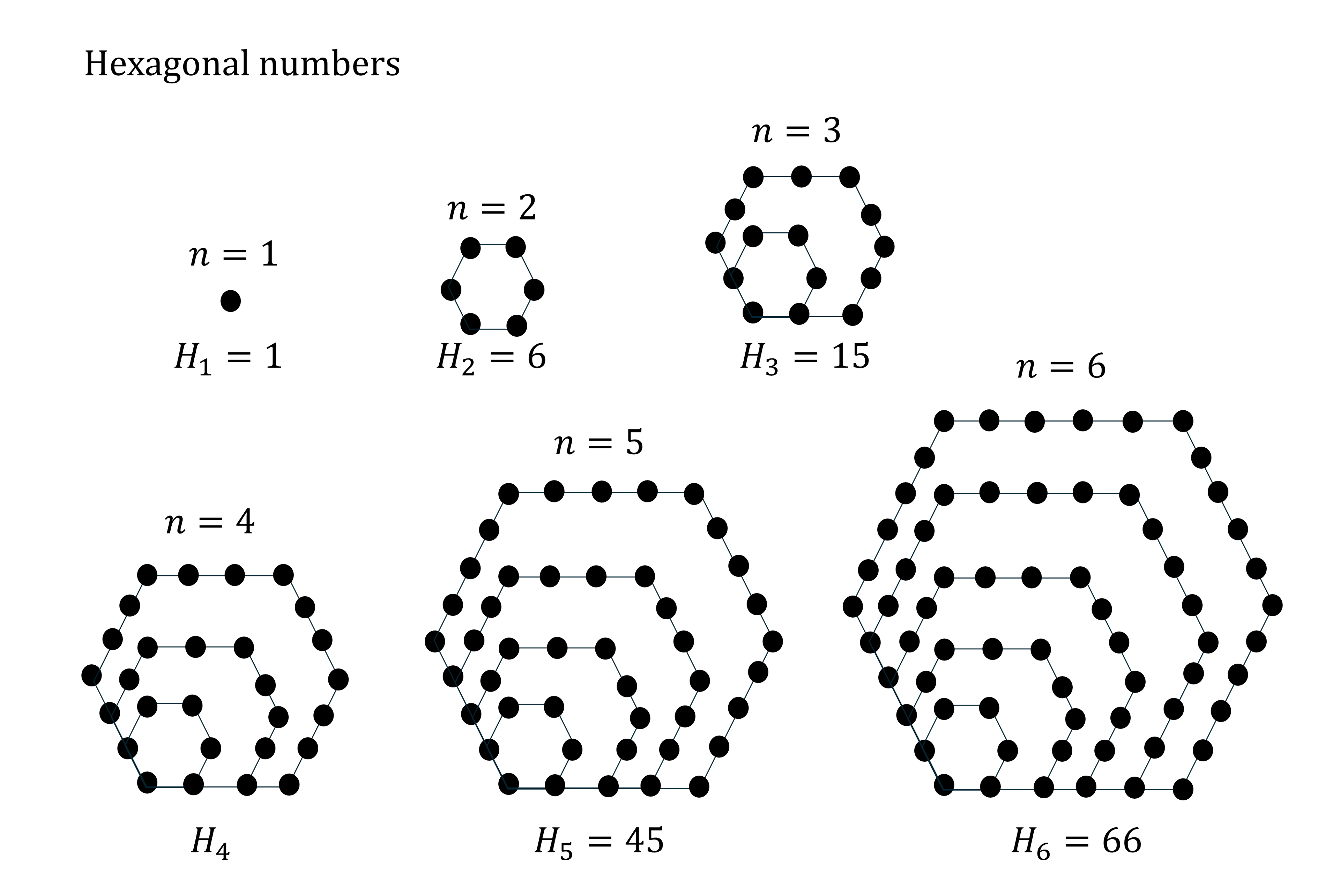This investigation introduces and explores the properties and patterns of the sequence of hexagonal numbers.
Hexagonal numbers are numbers formed by summing equally spaced dots around hexagons that sit inside of each other, as shown below.
If is the position of the term in the sequence then
is the
th hexagonal number.

By counting the total number of dots in the diagram for , work out the fourth hexagonal number,
.
Did this page help you?